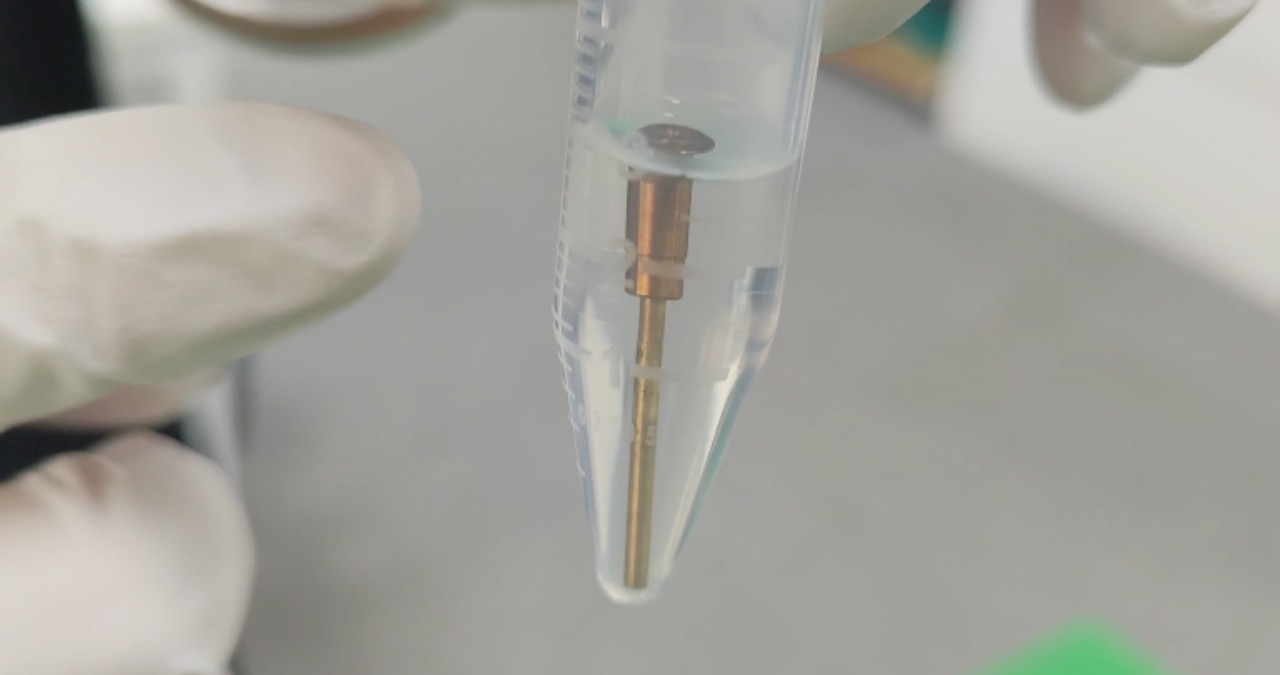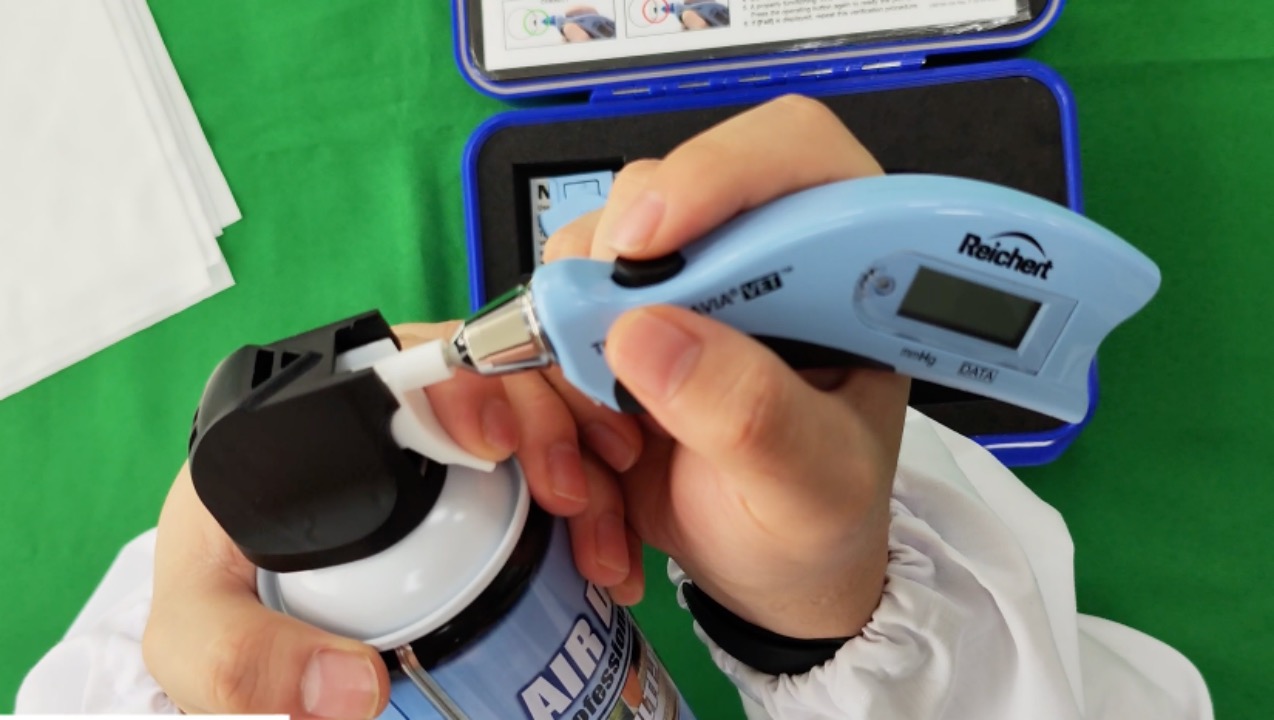Veterinary Tonometer Maintenance: Essential field lessons for maximizing accuracy and device longevity in your practice.
Why Should We Care About Contamination?
Every time you use a tonometer, its probe touches or almost touches the eye. This makes it a perfect spot for bacteria and viruses to hitch a ride from one animal to another if we’re not careful. For example, Staphylococcus pseudintermedius—a common eye bug in dogs—can quickly form sticky biofilms on the probe. These slimy layers are tough to clean off if you only do a quick wipe.
In horses, things can get even more serious. Pseudomonas aeruginosa loves moist areas, including around the tonometer probe. It can cause nasty corneal ulcers and can perforate the eye within a day if not caught early. I’ve seen cases where one contaminated measurement led to eye loss—something no vet wants on their conscience.
And it’s not just bacteria. Feline herpesvirus can linger on equipment and spread fast among cats. Even oily residues left on the probe can carry yeasts like Malassezia, causing stubborn eye inflammations that drive vets and owners crazy.
But here’s the kicker: contamination doesn’t just risk infections. It messes with your readings. Tear film residue can bump up pressure readings by a few millimeters of mercury. Dust can trick rebound tonometers into false readings. Leftover disinfectants can change how the probe feels and throws off calibration. Since normal eye pressure ranges are tight, even a small error can mean the difference between diagnosing glaucoma or missing it.
Cleaning: What It Really Means
Let’s break down cleaning into easy terms:
Cleaning means wiping off visible gunk. Use lint-free cloths and maybe an enzymatic cleaner to knock off dried tears and debris around the probe.
Disinfection goes deeper—killing bacteria, fungi, and viruses with things like 70% isopropyl alcohol. But don’t rush! The wipe needs to stay wet on the surface for at least a minute to actually work.
Sterilization is the gold standard, wiping out even spores. Usually, only certain parts like probe bases can handle this with steam autoclaving. The rest of your tonometer—especially the electronics—can’t take that heat without damage.
You don’t need to sterilize everything all the time. Regular cleaning and disinfection usually do the trick for healthy patients. But if you’re dealing with infections or immune-compromised animals, go the extra mile.
Different Tools Need Different Care
Not all tonometers are the same, so their care routines differ:
Devices with disposable covers are great because they stop direct contact with the cornea. Still, wipe the probe tip and housing carefully, and steer clear of ammonia cleaners that can wreck your screen.
Rebound tonometers with magnetic probes are trickier. You can usually remove and autoclave the probe base safely, but the magnetic parts need gentle cleaning with compressed air or alcohol wipes—liquid inside is a no-go.
Goldmann-style applanation tonometers let you sterilize the measurement prism after each use, which is perfect for infectious cases. But be ready to spend extra time cleaning and checking calibration regularly.
Learning these differences keeps your tools working longer and your readings reliable.
Making Maintenance Part of Your Day
Caring for your tonometer doesn’t have to be a chore. I start each day with a quick check—no cracks, buttons working, batteries sound? Then, a quick test on a calibration eye keeps me confident the readings are solid.
Between patients, toss used probe covers right away. Wipe reusable parts with 70% alcohol and let them dry fully before the next use. It’s a habit that takes seconds but saves headaches.
For infectious cases, I double-clean and use separate disposables. Changing gloves before each exam helps too.
At the end of the day, if I’m working in a humid place, I pull batteries out to avoid corrosion. I give the device a thorough clean with enzymatic solutions and note anything unusual in my maintenance log. Keeping track helps spot wear before it becomes a problem.
Challenges in the Field
If you do fieldwork or large animal practice, your tonometer faces tough conditions—dust, temperature swings, humidity. Storing it in a rugged, insulated case with desiccant packs helps, but those packs need replacing regularly.
In dusty barns or arenas, I rinse the eye area gently with saline before measuring to clear debris without hurting the cornea. Disposable probe covers aren’t optional here—they’re essential. And always have a backup device—maintenance waits for no one.
Though the temptation to rush is strong, trust me—cutting corners on cleaning only leads to wasted time and questionable results. A clean, well-kept tonometer makes exams faster and more reliable.
When to Call for Help
Your tonometer will usually give you hints before it fails completely—off readings, error messages, wonky behavior. Cleaning and swapping parts often fix issues, but if problems persist, it’s time to send it off for professional service.
Batteries can cause more trouble than you think. Corrosion sneaks in silently, making power unstable. Using good batteries and cleaning contacts with a pencil eraser can save you from a lot of headaches.
Many devices track usage, helping you plan maintenance. High-volume clinics may need yearly servicing; others can stretch to every two or three years. If your readings start drifting by more than 1 mmHg or act erratically, don’t wait—get it checked.
Looking Ahead
New tonometers with antimicrobial coatings or “smart” features that remind you to clean are on the horizon. These innovations can help, but they won’t replace good old-fashioned care and attention.
Final Thoughts
Your veterinary tonometer is an investment in your ability to diagnose and treat eye diseases confidently. Taking a few extra minutes to clean, disinfect, and maintain it pays off in accurate readings, safer patients, and longer equipment life.
Remember, in veterinary ophthalmology, precision matters—and it all starts with how you care for your tools.


